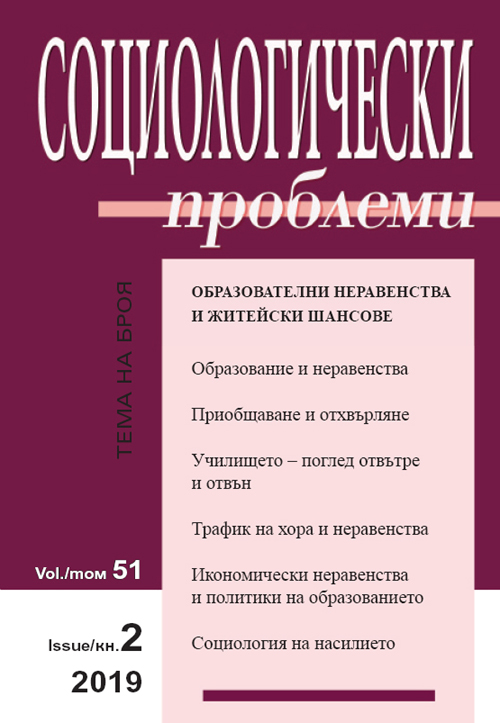Областни неравенства и образователни шансове в България: сравнителен анализ на данните от Националното външно оценяване
Provincial Inequalities and Educational Chances in Bulgaria: Comparative Analysis on the Results of the National External Examination
Author(s): Svetlomir ZdravkovSubject(s): Social Sciences, Education, Sociology, School education, Social differentiation, Sociology of the arts, business, education, Sociology of Education
Published by: Институт по философия и социология при БАН
Keywords: Socio-economic inequalities; educational inequalities; external examination; regional studies
Summary/Abstract: Educational (in)equality can be expressed in terms of the extent to which the success of the students in the education process is (in)dependent on out-of-school factors (e.g. gender and origin). However, in recent years, more and more research on the topic shows that inequality within the country is significantly greater than that across the countries. This draws the interest of the research community to the local and geographical disparities, covered by the same education system. To provide a deeper understanding of the local educational inequality in Bulgaria the following research presents a comparative analysis of the average scores, based on the results from the national external examinations (NESE) in all the 28 regions in Bulgaria. The results from the statistical analysis showed that the gap in the average scores (measured by a coefficient of variation) of the schools in the period 2008-2018 is growing wider which is an indicator of the rising inequality in the education system. At the same time, the analysis of the results from the ESE in 2018 shows that there is a difference in the average score across the regions. It seems that depending on the grade, one could observe a correlation/link between the average score of the region and the internal homogeneity in the score of the local schools. One could also arguably find a correlation/link between the NESE average scores and factors like average income, ethnic composition, and types of schools in the regions. Income inequality can account mostly for the average score in the 12th grade (lower in the other grades), where the predominant type of school in the region is an even stronger factor. The ethnic ‘profile’ of the regions mostly can account for the differences in the score for the 4th and 7th grade in the regions with a higher percentage of Roma population. The higher percent of Turkish population can account for the difference in 4th and 12th grade.
Journal: Социологически проблеми
- Issue Year: 51/2019
- Issue No: 2
- Page Range: 530-556
- Page Count: 27
- Language: Bulgarian
- Content File-PDF

